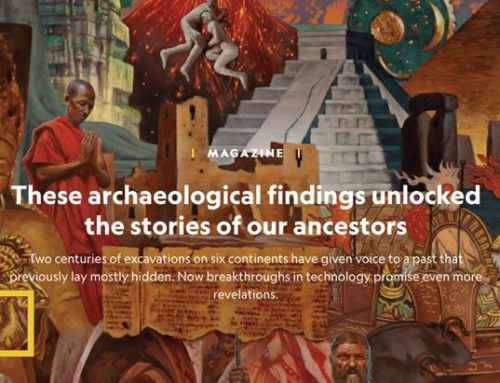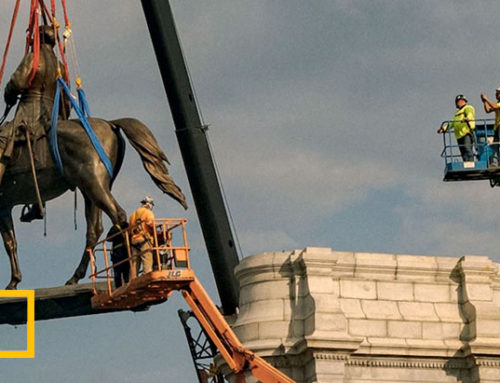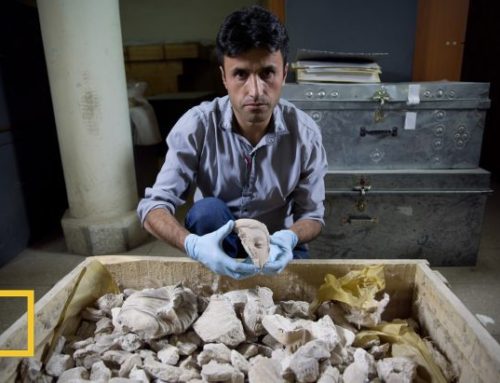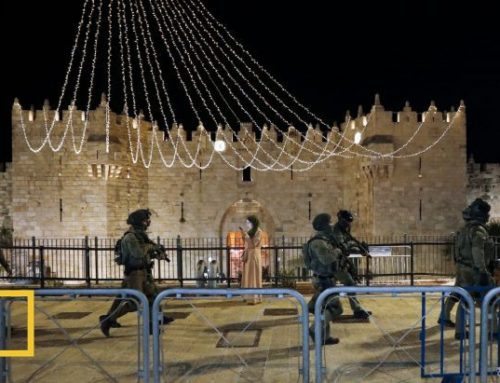View a pdf of the story as it appears in the April 2024 issue of National Geographic.
Merchants and missionaries once dubbed this region “the Cannibal Isles.” The recent discovery of human remains there could offer insights into its turbulent history.
The reef-fringed shores of Fiji’s largest island of Vitu Levu draw tourists eager to snorkel in its tropical waters. Just a few miles inland, however, local villagers recently uncovered a rare mass grave that could shed light on a turbulent and grisly period in the history of this South Pacific archipelago.
The human remains were found February 29 at the summit of a massive hill fort overlooking the muddy Sigatoka River that snakes out of Vitu Levu’s rugged highlands. They have yet to be analyzed, but locals speculate that they were the victims of ritual cannibalism long practiced during tribal warfare. Archaeologists, however, suspect the dead more likely succumbed to a measles epidemic. This devastating plague, tragically transmitted by the Fiji king following his 1875 visit to Australia, killed one in three of his subjects.
Fiji is made up of more than three hundred volcanic islands and lies a thousand miles north of New Zealand. What are known as the Lapita people—the seafaring ancestors of today’s Polynesians—settled here some three thousand years ago. Later colonists arrived from Melanesian islands to the west as well as Polynesian outposts to the east like Samoa and Tonga. By a thousand years ago, Fiji had emerged as an important trading crossroads of the South Pacific.
War and epidemic
In 1789, Captain William Bligh of the Bounty fame was the first European to chart the Fiji coast, and American and European merchants and missionaries followed in the early and mid-nineteenth century. They dubbed the region “the Cannibal Isles” and sought to stamp out the ritual cannibalism, in which victors consumed those defeated in warfare to obtain their victims’ power. Western Christians also exploited the area’s sea cucumbers for export to China, and British and American planters soon arrived seeking land to produce cotton. The religious and economic upheaval led to increased conflict among Fiji’s disparate clans and tribes as Britain and the United States angled to annex the fertile archipelago.
The crisis came to a head in 1867, when British missionary Thomas Baker attempted to convert members of a highland tribe along the Sigatoka River to Christianity. He is said to have infuriated locals by touching the head of their chief, a serious cultural taboo. Baker and seven of his Fijian converts were dismembered, burnt, and eaten by Vitu Levu villagers; the missionary’s leather sandals are on display in the Fiji Museum in the capital of Suva. Baker’s death, Indigenous raids, and the subsequent killing of two white settlers led vigilante whites—including a group that called itself the Ku Klux Klan after the American white supremacist organization—to roam the islands seeking vengeance.
The chaos eventually sparked war between highland Fijians who held to traditional ways and Britain, with their Fiji and white Christian allies on the coast. One traditionalist faction was based at Tavuni, strategically perched high above a bend in the Sigatoka River, a half-dozen miles inland on Vitu Levu. Excavations and oral histories show that a Tongan immigrant settled at Tavuni around 1800 and built a chief’s home and some sixty other buildings on the high ridge and intermarried with local women.
By the early 1870s, the area’s villagers sided with the highland Kai Colo tribe in a guerilla war against the first unified Fiji government led by Christian monarch Cakobau. In 1874, the king signed over control of Fiji to the British Empire, and then sailed to Sydney to celebrate the annexation. There he and the diplomatic party contracted measles. On their return, the virus spread quickly to a population lacking immunity. Some 40,000 indigenous Fijians died in the terrible epidemic. Meanwhile, British soldiers and Cakobau’s forces launched a brutal campaign to defeat the Kai Colo and their allies. During the fighting in 1876, Tavuni was burned, and the rebels melted into the highlands. Abandoned, the formidable redoubt quickly reverted to dense forest.
An accidental find
“It was all jungle,” says Lanieta Laulau, who grew up in a village near Tavuni. “We used to come up here to collect firewood, but we knew nothing of its past.” In the 1980s, locals cleared the site and archaeologists exposed dozens of house foundations and protective walls surrounding the steep slopes to make it accessible to tourists. Laulau was among those who helped chop away the dense brush and now serves as the caretaker for the national historic monument, which is leased to the government by a local tribe.
In February, when the chief of the local tribe died, villagers chose to inter him at the highest point at Tavuni. While digging the grave, large quantities of human skeletal remains appeared. “There were heaps and heaps of bones,” says Laulau. “This was not the grave of a single individual,” she adds. “They were all jumbled.”
Laulau had objected to the villagers’ decision to dig a grave on a historic site but negotiated to keep dozens of bones for scientific analysis. The rest were reburied. During a March visit, she retrieved a clear plastic bag from her office in the visitors’ center and gently placed the recovered bones on a picnic table outside. They include human skull caps, jawbones with intact teeth, and numerous arm and leg bones.
Only two such mass graves have been found in the archipelago, according to Elia Nakoro, senior archaeologist at the Fiji Museum, though the remains were reburied without analysis. Both were in the vicinity of hill forts. Some skeletal parts, he added, have been found outside traditional graves, part of a practice of ringing a settlement with bones to frighten away intruders.
Given that Tavuni was occupied only by traditional Fijians, Laulau argues that the dead were likely defeated warriors consumed by those killed by the fortress’s defenders. “They ate the meat and left the bones, which they then buried in a mass,” Laulau says, pointing to a nearby monolithic stone on the site that was, by local tradition, the place of ritual execution of prisoners. Archaeological evidence from butchered human bones on the island chain suggest the practice was ancient, though likely only practiced under strict ritual conditions.
Nakoro, however, thinks it is more likely the bones come from those who perished during the 1875 measles epidemic, before the fort was burned. Patrick Nunn, an archaeologist at Australia’s University of the Sunshine Coast, agrees. “Almost certainly, this is a mass grave from the 19th century when Fijian populations were decimated by measles and influenza against which they had no natural resistance,” he says. Children were particularly vulnerable. The disease originated more than five thousand years ago from cattle in Mesopotamia and did not reach the South Pacific until the arrival of Europeans. People died in such large numbers that the weakened survivors would have struggled to bury them.
Nakoro intends to send the bones to Nunn’s lab for study. The analysis should be able to provide important data on the victims’ age, gender, and cause of death, as well as clues to when they died. Cannibalism would be evident if researchers detect butchery marks on the bones, while disease might be identified through molecular studies of the remains.
Until then, Laulau is keeping a close eye on the valuable find, sleeping at the visitors’ center to protect the bones from damage or theft. Her husband, however, refused to join her in her vigil. “He told me, ‘I’m not going to sleep here,’” she says with a smile. “’These are your ancestors, but I’m from a different province—they could attack me!’”





